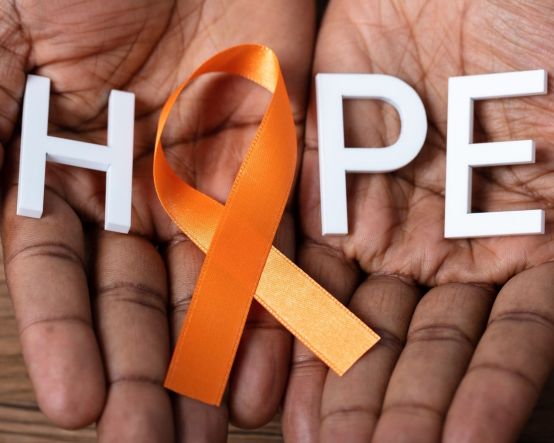Understanding Leukemia: Key Facts, Latest Treatments, and How to Stay Ahead
Introduction: Leukemia is a life-altering condition that affects thousands of people worldwide each year. Although it can be intimidating to hear about, significant progress in early diagnosis and treatment has provided hope for many. In this article, we’ll explore the basics of leukemia, common symptoms, and the revolutionary advancements in treatment that are giving patients a brighter future.
Introduction: Leukemia is a life-altering condition that affects thousands of people worldwide each year. Although it can be intimidating to hear about, significant progress in early diagnosis and treatment has provided hope for many. In this article, we’ll explore the basics of leukemia, common symptoms, and the revolutionary advancements in treatment that are giving patients a brighter future.

What is Leukemia?
Leukemia is a type of cancer that affects the blood and bone marrow, where blood cells are produced. It begins when healthy blood cells develop mutations that make them abnormal. These abnormal cells often multiply uncontrollably, crowding out healthy blood cells, and impeding the body's ability to fight infections. There are several types of leukemia, including:
- Acute Lymphoblastic Leukemia (ALL)
- Acute Myeloid Leukemia (AML)
- Chronic Lymphocytic Leukemia (CLL)
- Chronic Myeloid Leukemia (CML)
Each type progresses differently, and the symptoms can vary from person to person, depending on the type and severity of the disease.
Recognizing the Symptoms of Leukemia
Leukemia symptoms can be subtle at first, but as the disease progresses, they tend to become more apparent. Common symptoms include:
- Fatigue and weaknessthat doesn’t improve with rest
- Frequent infectionsor fever
- Unexplained weight lossand loss of appetite
- Easy bruising or bleeding(like nosebleeds or gum bleeding)
- Pale skin
- Pain or a full feelingin the abdomen due to an enlarged liver or spleen
- Swollen lymph nodes
If you or someone you know experiences these symptoms, it's essential to see a healthcare provider promptly for a blood test. Early detection can make a significant difference in the course of treatment.
Breakthroughs in Leukemia Treatment
The landscape of leukemia treatment has evolved dramatically in recent years, offering new hope for patients. Here are some of the most promising advancements:
- Targeted Therapy:Targeted therapies aim to attack specific parts of leukemia cells that help them grow and survive. These therapies are more precise than traditional chemotherapy, reducing damage to healthy cells and improving the effectiveness of treatment.
- Immunotherapy:Immunotherapy harnesses the body’s immune system to fight cancer. CAR-T cell therapy, for example, involves modifying a patient's own immune cells to better recognize and attack leukemia cells. This innovative treatment has shown significant success in treating certain types of leukemia.
- Bone Marrow Transplant (Stem Cell Transplant):In cases where other treatments aren’t effective, a bone marrow transplant might be the best option. This procedure involves replacing the patient’s damaged bone marrow with healthy stem cells from a donor, which can then generate new, healthy blood cells.
- Gene Editing:Emerging gene-editing technologies like CRISPR hold the potential to treat leukemia by correcting genetic mutations that cause the disease. This revolutionary approach is still in its experimental phase, but it could be a game-changer for patients in the future.
Prevention: Can Leukemia Be Avoided?
While leukemia cannot always be prevented, some lifestyle factors can influence your risk. Although the exact cause is not known, some known risk factors include:
- Exposure to certain chemicals, such as benzene, often found in industrial environments
- Radiation exposure, whether from medical treatments or environmental factors
- Genetic conditions, such as Down syndrome, that may increase the risk
It’s important to minimize exposure to known environmental risks, live a healthy lifestyle, and undergo regular health check-ups to ensure early detection. While prevention isn't always possible, early diagnosis significantly improves treatment outcomes.
The Importance of Early Diagnosis
Early diagnosis of leukemia is critical. The earlier the disease is detected, the sooner treatment can begin, which significantly increases the likelihood of a positive outcome. Regular check-ups and a proactive approach to your health are essential, especially if you have a family history of leukemia or any of the risk factors mentioned above.
Conclusion: There’s Hope for Leukemia Patients
Leukemia may seem like an overwhelming diagnosis, but advances in medical research and treatment have transformed the outlook for many patients. Thanks to targeted therapies, immunotherapies, and bone marrow transplants, survival rates for leukemia have increased dramatically. By staying informed and proactive, you can help ensure that you or a loved one receives the best possible care.
If you or someone you know is experiencing symptoms of leukemia, don’t hesitate to consult a doctor. Early detection and treatment can significantly improve the chances of a successful outcome.
Call to Action: Take control of your health by scheduling a regular check-up with your healthcare provider. Stay informed about the latest treatments and talk to your doctor about the best options for you or your loved ones.